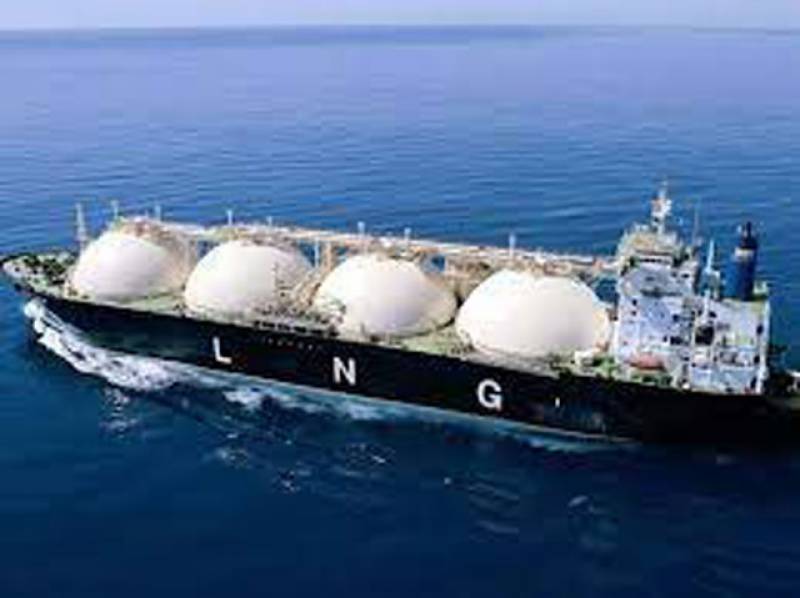Govt advised to enter into new long term contracts to meet future LNG demand

Lorem ipsum dolor sit amet, consectetur adipiscing elit. Ut elit tellus, luctus nec ullamcorper mattis, pulvinar dapibus leo.
Pakistan’s Planning Commission has recommended that the government should enter into new long-term LNG contracts, install an additional terminal with a minimum capacity of 600MMCFD, and build gas storage across the country in order to meet future LNG demand.
The North-South gas pipeline project should also be completed before 2025 in order to meet the growing gas demand in the north. The proposed import of LNG by 2030 will increase to 1,900 MMCFD.
The recommendations were made in Pakistan Natural Gas: Policy Analysis and Way Forward, a report launched on Thursday by the Ministry of Planning, Development and Special Initiative. Integrated Energy Planning (IEP) prepared the report. The Planning Commission’s Energy Wing has established the IEP. Ahsan Iqbal, federal minister for planning, launched the report.
For meeting the future gas needs of the country, the report makes several short-term, medium-term, and long-term recommendations. A recommendation has been made to introduce gas trading companies. The global gas trading industry offers governments financial risk management, contract swapping, hedging, procurement and sales of LNG for a better natural gas supply chain. To achieve sustainable gas supply targets, Pakistan should consider extending the mandate of PLL to follow these footprints.
Local and foreign firms may be encouraged to participate in gas exploration and production. E&P companies may gain confidence in the gas E&P sector of Pakistan if the government offers initiatives to create a favorable working environment through ease of doing business, a safe working environment, and competitive wellhead prices comparable to regional countries. Third-party consultants should conduct a detailed study on low BTU gas conversion to make a feasibility plan for utilizing low BTU gas reserves efficiently for power generation and domestic consumption.
In order to reduce UFG losses, Sui companies can set realistic targets by analyzing the losses in each UFG component based on international best practices. As an alternative to solely working on a combined limit, the government should develop a UFG reduction program in collaboration with mutual technical assistance between Sui companies to work on component-wise UFG reduction targets. As LNG spot prices fluctuate frequently on the international market, the Public Procurement Regulatory Authority’s (PPRA’s) rules should support the LNG procurement agencies. It is inevitable that PPRA rules will be specific to gas trading companies when they develop. A rule such as 13(1), which limits the response time for national competitive bidding to fifteen days and thirty days for international competitive bidding, needs to be reconsidered in order to support LNG procurement agencies in acquiring LNG cargoes in a timely manner.
The capacity of LNG terminals should be improved and enhanced in the medium and long term. LNG can be imported into the country until 2025 if enough terminal capacity is available. Therefore, to facilitate the anticipated import requirement of 1,900 MMCFD by 2030, an additional terminal with a minimum capacity of 600 MMCFD will be required. Additionally, the report recommended enhancing re-gasification capacity. The length of time it takes for a single cargo to be unloaded and re-gasified is almost 5 days at present. It is necessary to reduce the regasification duration to ensure that a maximum number of LNG cargoes can be unloaded each month in order to meet future LNG imports. By 2030, Pakistan may consider developing gas storage facilities to avoid expensive LNG imports in the future. There are two ways to store gas: in subsurface wells and in salt caverns above ground. By storing cheap gas acquired during the summer and utilizing it in the winter, the country will be able to reduce gas imports. The LNG imported into the country can be saved more than $15 per MMBTU by utilizing storage facilities.
Keeping or extending long-term LNG contracts has been recommended to the government. Government has only three active long-term contracts, some of which include a clause for contract revision in 2026. In order to maintain a smooth and uninterrupted supply of gas, Pakistan should expedite the process of entering into new long-term LNG import contracts due to its increased reliance on LNG. By importing natural gas through neighboring countries, Pakistan could reduce its dependence on LNG imports from spot markets. If constructed in the future, the Turkmenistan-Afghanistan-Pakistan-India (TAPI) gas pipelines can supply 1,350 MMCFD of natural gas while the Iran-Pakistan (I-P) pipelines can supply 750 MMCFD.
Gas pipeline development between North and South needs to be expedited. Considering that the LNG imports expected by 2030 will reach 1,900 MMCFD, it is essential that the pipeline project is completed before 2025 in order to meet the growing demand for gas in the North. As a result of the completion of the pipeline, the gas supply will be able to flow smoothly from the south to the north. A feasibility study of a possible cross-border gas pipeline should also be conducted. Overall, the Planning Commission’s report doesn’t present any new information, except for its cover, and is based on data that is at least one and a half years old. There is a great deal of copy and paste work in this report. There were even sources dated back to 2016-21 used in the report, including the energy year book. A large portion of the report has already been covered in the media in some form. Despite being prepared in March 2023 with data from 2021-22, the report was released three months later. The report only included OGRA gas prices from February 2023, the rest are from 2021-2022.
